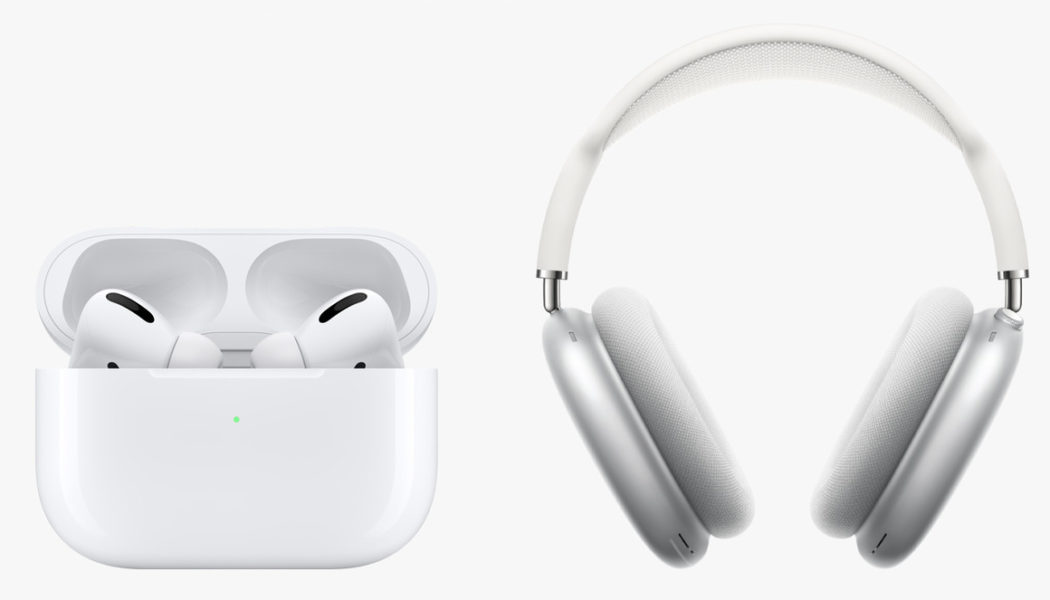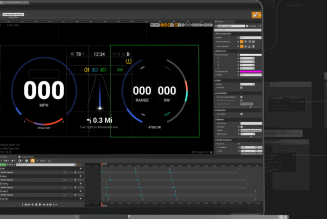In addition to new MacBooks on October 18th, Apple finally also introduced its third-generation AirPods, which are set to ship on October 26th for $179 and are available for preorder now. Apple also lowered the cost of the now-entry-level AirPods 2 from $159 to $129 and will now only sell the version that comes with a wired charging case. As a result, the AirPods lineup now consists of four models of AirPods: the $129 AirPods 2, the $179 AirPods 3, the $249 AirPods Pro, and the $549 AirPods Max.
With such a wide range of AirPods available at various price points, it can be overwhelming to try to figure out which one you should purchase. That’s why we’ve put together this guide comparing the models to each other — so you can find the right fit for you. Note that while we have reviewed most of the AirPods in the lineup, we’ve not yet tested the AirPods 3, but we will soon.
AirPods Lineup Comparison
| Specification | AirPods (second-gen) | AirPods (third-gen) | AirPods Pro | AirPods Max |
|---|---|---|---|---|
| Specification | AirPods (second-gen) | AirPods (third-gen) | AirPods Pro | AirPods Max |
| Active noise canceling / reduction | No | No | Yes | Yes |
| Transparency mode | No | No | Yes | Yes |
| Connectivity | Bluetooth 5.0 | Bluetooth 5.0 | Bluetooth 5.0 | Bluetooth 5.0 |
| Earbud size (mm) | 40.5 x 16.5 x 18.0 | 30.8 x 18.3 x 19.2 | 30.9 x 21.8 x 24 | 187.3 x 168.6 x 83.4 |
| Case size (mm) | 53.5 x 44.3 x 21.3 | 46.4 x 54.4 x 21.4 | 45.2 x 60.6 x 21.7 | 134.5 |
| Earbud weight (g) | 4 | 4.28 | 5.4 | 384.8 |
| Case weight (g) | 38.2 | 37.91 | 45.6 | 134.5 |
| Battery (earbud) | Up to 5 hours | Up to 6 hours | Up to 4.5 hours | Up to 20 hours |
| Battery (case) | More than 30 hours | Up to 30 hours | More than 24 hours | N/A |
| Water resistance certification | No | IPX4 | IPX4 | No |
| Wired charging | Lightning connector | Lightning connector | Lightning connector | Lightning connector |
| Wireless charging | No | Qi-certified or MagSafe chargers | Qi-certified or MagSafe chargers | N/A |
| Charging cord included | Lightning to USB-C | Lightning to USB-C | Lightning to USB-C | Lightning to USB-C |
| Price | $129 | $179 | $249 | $549 |
| Custom chips | Apple H1 | Apple H1 | Apple H1 | Apple H1 (in each ear cup) |
The AirPods 3, like the AirPods 2 and AirPods Pro, are in-ear wireless earbuds. The AirPods 3 weigh about the same as the AirPods 2 – 4.28 grams and 4 grams, respectively. At 5.4 grams, the AirPods Pro are only slightly heavier. The wireless earbuds all measure about the same as well, with the AirPods 2 offering the greatest length (40.5mm x 16.5mm x 18.0mm). While the AirPods 3 (30.8mm x 18.3mm x 19.2mm) measure about the same in length, they’re wider than the AirPods 2. The AirPods Pro (30.9mm x 21.8mm x 24mm) are wider than both the AirPods 2 and 3.
The AirPods 3, like the AirPods Pro, are sweat and water-resistant, unlike the AirPods 2 (and the Max). That means you don’t need to worry about them during an intense workout or when it rains. The AirPods 3 and AirPods Pro also offer shorter stems than the AirPods 2, while the AirPods Pro come with replaceable silicone ear tips in three different sizes.
:no_upscale()/cdn.vox-cdn.com/uploads/chorus_asset/file/22938958/Screen_Shot_2021_10_19_at_8.26.33_AM.png)
In contrast to the small plastic AirPods earbuds, the AirPods Max are a large over-ear pair of headphones that offers stainless steel earcups with a curvy mesh headband. They weigh in at 384.8 grams and measure 187.3mm x 168.6mm x 83.4mm. While the earbuds only come in white, you can buy the Max in a variety of different colors, including silver, space grey, sky blue, pink, and green.
:no_upscale()/cdn.vox-cdn.com/uploads/chorus_asset/file/15993019/akrales_190327_3315_0004.jpg)
Each device comes with a Lightning-to-USB-C cable and a charging case. However, the kind of charging case differs. The AirPods 2 include a wired charging case (53.5mm x 44.3mm x 21.3mm) that can only be charged with a Lightning cable. Meanwhile, the cases for the AirPods 3 (46.4mm x 54.4mm x 21.4mm) and the Airpods Pro (45.2mm x 60.6mm x 21.7mm) can be charged wirelessly or with the cable. The AirPods 3 and AirPods Pro also now support MagSafe technology, the same magnetic attachment and charging system you can use with the iPhone. Meanwhile, the AirPods Max have their own Smart Case, which is designed to preserve battery charge by putting the headphones into a very low power state.
All of the AirPods are compatible with the latest iPhones, iPads, Apple Watches, and Macs. However, the AirPods 2 are also compatible with older devices, like the iPhone 5s, iPad mini 3, iPad mini 2, and the 6th-generation iPod touch.
:no_upscale()/cdn.vox-cdn.com/uploads/chorus_asset/file/22938890/Screen_Shot_2021_10_19_at_8.29.57_AM.png)
All of the AirPods in the current lineup are powered by Apple’s H1 headphone chip now that the AirPods 2 — and not the first-generation, which offered a W1 chip — are the entry-level model. As a result, all support Bluetooth 5.0, and you can launch Siri via a voice command on all of the devices. You’ll also be able to automatically switch between your various Apple devices.
The over-ears AirPods Max come with a Digital Control knob borrowed from the Apple Watch and another button you can use to alternate between the Active Noise Cancellation and Transparency modes. However, there is no power button. In contrast, the earbuds rely solely on touch controls — and even in this, they can differ. To play a tune, skip forward, or answer a phone call on the AirPods 2, you need to double-tap. However, with the AirPods 3, AirPods Pro, and the Digital Crown on the AirPods Max, you just need to click once to pause, play, or answer a call. Meanwhile, you can press twice to skip forward and three times to skip back.
:no_upscale()/cdn.vox-cdn.com/uploads/chorus_asset/file/22938895/Screen_Shot_2021_10_19_at_8.31.44_AM.png)
Audio features
As we’ve noted in our reviews — with the exception of the AirPods 3, which we’ve yet to test — all of the AirPods in the lineup offer great sound quality. Each new earbud model offers iterative improvements that enhance the audio experience.
Of course, the AirPods 3, AirPods Pro, and AirPods Max offer a lot more in comparison to the older AirPods 2 when it comes to audio technology. All three of the newer models boast support for spatial audio, which should result in an immersive, theater-like sound quality experience. While the AirPods 2 featured limited spatial audio through Apple Music only, the other three include spatial audio for group FaceTime calls, Netflix, and other content as well. The AirPods 3 also offer spatial audio with dynamic head tracking across all Apple devices, as well as Dolby Atmos in Apple Music.
The AirPods 3, AirPods Pro, and AirPods Max all boast features like Adaptive EQ, which customizes your audio experience, and an intuitive force sensor for media control. Apple says the custom high-excursion Apple drivers found in all three also deliver powerful bass. Meanwhile, the AirPods Max are built with H1 chips in each ear cup, so you get ample bass. The three models also include a custom high dynamic range amplifier that offers clear sound and lengthens battery life (the AirPods Max lacks this latter feature).
The AirPods Pro and AirPods Max offer Active Noise Cancellation, which silences background noises so you can better focus on what you’re listening to. These models are also the only ones that offer the option to switch to Transparency Mode, which makes it possible to hear the sounds around you.
:no_upscale()/cdn.vox-cdn.com/uploads/chorus_asset/file/22173866/DSCF2681_2.jpg)
As far as call quality is concerned, the AirPods 2, AirPods 3, and AirPods Pro all offer dual beamforming microphones — in other words, every set has two mics in each ear cup, with technology designed to reduce outside noises and better focus on your voice.
However, unlike the AirPods 3 and AirPods Pro, the AirPods 2 doesn’t offer inward-facing microphones. That means it’s not able to listen inside of your ear to reduce internal sounds. The AirPods Max, meanwhile, offer nine microphones: eight for active noise cancellation and three for voice pickup.
:no_upscale()/cdn.vox-cdn.com/uploads/chorus_asset/file/19336093/akrales_191030_3763_0378.jpg)
The AirPods 2, AirPods 3, and AirPods Pro all offer motion-detecting accelerometers that detect taps and speech-detecting accelerometers. The latter recognizes when you’re speaking, working with the beamforming microphones to silence outside sounds and pick up only your voice.
Both the AirPods 2 and AirPods Pro offer dual optical sensors that help detect when they’re in your ears, although the AirPods 3 doesn’t. Instead, it offers a skin detect sensor, which uses your skin to determine whether your AirPods are in your ears or not and, thus, whether it should play or pause audio. On the other hand, both the AirPods 3 and the Airpods Pro offer an intuitive force sensor for media control — something the AirPods 2 lacks.
The AirPods Max include an optical sensor and accelerometer in each ear cup. The headphones additionally come with a position and a case-detect sensor for each ear to automatically detect when they are on a user’s head. The left ear cup also has a gyroscope; all of these sensors combined make it possible to combine dynamic head tracking with spatial audio.
:no_upscale()/cdn.vox-cdn.com/uploads/chorus_asset/file/22159223/npatel_201209_4332_0019sq.0.jpg)
As might be expected, the AirPods Max overwhelmingly outperform the rest of the AirPods when it comes to battery life. Apple says they offer up to 20 hours of listening time on a single charge with Active Noise Cancellation or Transparency mode on. With spatial audio enabled, the AirPods Max also offers up to 20 hours of movie playback on a single charge. Meanwhile, Apple says five minutes of charging provides around 1.5 hours of listening time.
In contrast, Apple claims the AirPods 2 offer up to five hours of listening time on a single charge, while the AirPods 3 offer six hours. The tech giant also says the entry-level AirPods offer over 24 hours of listening time with the charging case, just like the AirPods Pro. Despite being cheaper than the AirPods Pro, the AirPods 3 beat them and the AirPods 2, offering up to 30 hours. The AirPods Pro also offer the least amount of listening on one charge — only 4.5 hours and up to five hours with Active Noise Cancellation and Transparency turned off. The Pro additionally offer up to 3.5 hours of talk time with a single charge, while the AirPods 3 offer up to three hours of talk time. In contrast, the AirPods 2 beats both, offering up to five hours of listening time with one charge.
When it comes to charging case battery life, the AirPods 3 also differ from the AirPods 2 and AirPods Pro, offering up to 30 hours of listening time as opposed to the Pro and AirPods 2 providing over 24 hours of listening time. The AirPods 3 also offer up to 20 hours of talk time versus over 18 hours of talk time for the Pro and up to 18 hours of talk time for the AirPods 2. Apple claims both the AirPods 3 and AirPods Pro, however, take five minutes to provide about an hour of listening time or an hour of talk time. In contrast, the AirPods 2 need to be in the case for 15 minutes to provide up to three hours of listening time or up to two hours of talk time.
No matter which you buy, each model in the AirPods lineup should offer great sound and call quality. However, which model you should purchase depends upon your needs and budget.
Off the bat, if you want over-ear headphones, obviously the AirPods Max are the ones you should buy. They are also the top choice for sound quality and offer features the others don’t, ranging from active noise cancellation to an H1 chip and sensors in each ear cup.
On the other hand, if you’re looking for a great pair of earpods, pick up the AirPods 3 or AirPods Pro, especially if you often engage in intense workouts, both of which offer sweat and water resistance. And if you’ve had trouble in the past with earpods slipping out of your ears, you may want to choose the AirPods Pro for their replaceable and customizable ear tips, which is something the AirPods 3 don’t offer.
If you’re on a tight budget, however, and want something under $200, consider the AirPods 3. Unless you’re truly strapped for cash, it’s worth forking out an extra $50 for the extra perks the AirPods 2 don’t offer, like a MagSafe charging case, greater spatial audio support, improved battery life, and much more.

/cdn.vox-cdn.com/uploads/chorus_asset/file/10453121/20180319_airpods_mx4_vladsavov.jpg)
/cdn.vox-cdn.com/uploads/chorus_asset/file/22936610/Screen_Shot_2021_10_18_at_10.23.16_AM.png)
/cdn.vox-cdn.com/uploads/chorus_asset/file/19336097/cwelch_191031_3763_0001.jpg)
/cdn.vox-cdn.com/uploads/chorus_asset/file/22648758/AirPods_Max_Front_Press_Photo.jpeg)








